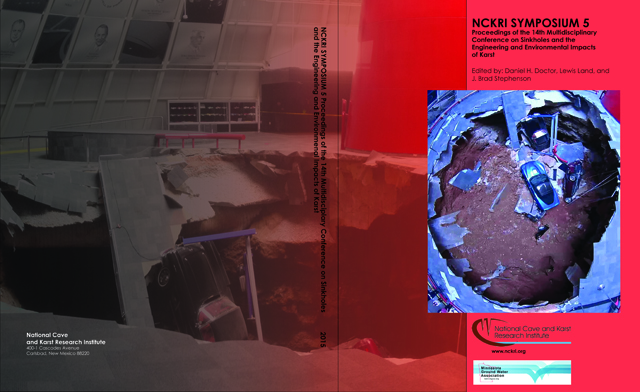Abstract
In Florida, shallow depressions (i.e., depressions <1-2 m in depth) on the land surface are often attributed to sinkhole development. However, it has become evident that there are at least six different mechanisms through which these depressions can form in geologically young cover sediments. These mechanisms include: 1. Cover-subsidence sinkholes over shallow limestone; 2. Suffosion sinkholes over shallow limestone; 3. Cover settlement over shallow shell beds; 4. Large, aeolian deflation areas that resemble “Carolina bays;” 5. Depressions that mimic landforms developed on a shallow paleosol; and 6. Depressions created by pedodiagenesis (i.e., conversion of smectite to kaolinite) in a soil-forming environment. Of these, only the first two appear to represent traditional mechanisms for sinkhole development in eogenetic karst. Cover settlement over shell beds is poorly understood and incorrectly attributed to sinkhole development processes. This type of depression has serious limitations in terms of cover thickness and shell content of the substrate. The last three mechanisms are pseudokarst created by aeolian and soil-forming processes. In this paper we present examples of each and discuss their constraints and evidence.
Rights Information
DOI
http://dx.doi.org/10.5038/9780991000951.1041
Shallow Depressions in the Florida Coastal Plain: Karst and Pseudokarst
In Florida, shallow depressions (i.e., depressions <1-2 m in depth) on the land surface are often attributed to sinkhole development. However, it has become evident that there are at least six different mechanisms through which these depressions can form in geologically young cover sediments. These mechanisms include: 1. Cover-subsidence sinkholes over shallow limestone; 2. Suffosion sinkholes over shallow limestone; 3. Cover settlement over shallow shell beds; 4. Large, aeolian deflation areas that resemble “Carolina bays;” 5. Depressions that mimic landforms developed on a shallow paleosol; and 6. Depressions created by pedodiagenesis (i.e., conversion of smectite to kaolinite) in a soil-forming environment. Of these, only the first two appear to represent traditional mechanisms for sinkhole development in eogenetic karst. Cover settlement over shell beds is poorly understood and incorrectly attributed to sinkhole development processes. This type of depression has serious limitations in terms of cover thickness and shell content of the substrate. The last three mechanisms are pseudokarst created by aeolian and soil-forming processes. In this paper we present examples of each and discuss their constraints and evidence.

